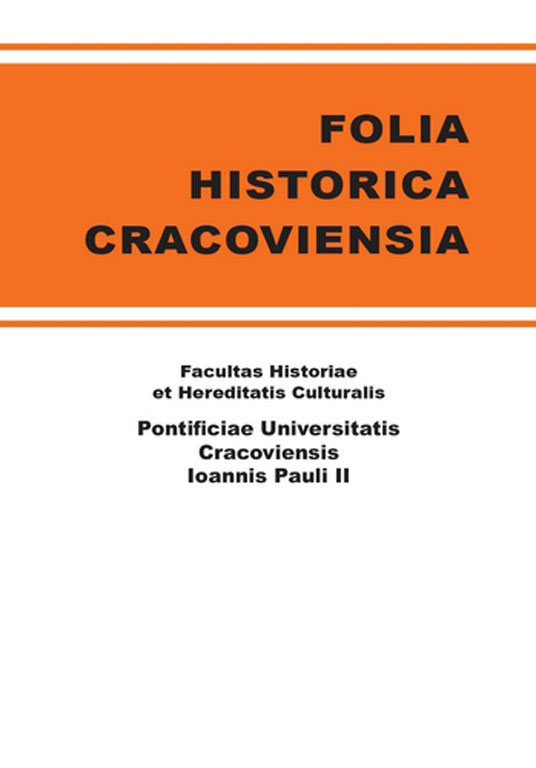Najstarsze fazy kościoła parafialnego pod wezwaniem św. Małgorzaty i św. Stanisława w Żębocinie
DOI:
https://doi.org/10.15633/fhc.213Słowa kluczowe:
kościół parafialny św. Małgorzaty, Żebocin, badnia archeologiczne i architektoniczneAbstrakt
The paper has been based on archaeological and architectural exploration of the church in Żębocin carried out in 2011. Żębocin, a village in the Miechów district and the Proszowice deanery, had its beginnings reportedly in the mid-11th century. However, the first squire of Żębocin documented in historical sources was Tomko, coat of arms unknown, mentioned in 1384. According to tradition, the first church in the village, which has not survived, was built in the years 1059–1071 and consecrated by St. Stanislas of Szczepanów. In a local legend, the wife of knight Mikołaj of Żębocin took shelter in the tower of a stone church in Żębocin during the unrest in the reign of Boleslaus the Brave. The stone foundation under the north-eastern corner of the chancel belonged probably to a stone building, its function unknown, which may have stood there already in those turbulent times. The extant church, erected in the mid-13th century or soon afterwards, was a small single-nave structure with a chancel closed with a straight wall, built from bricks (with a wendian bond pattern on its elevation) on stone foundations. It combined two styles: Romanesque (as shown by the surviving splayed window in the northern elevation of the chancel) and Gothic (the brick ogival frame in the northern elevation of the nave). The important question whether the church had a tower from the start and where that tower was located remains undecided; the tower could have been incorporated into the body of the nave from the west or built above the chancel; it could also have been added afterwards, in the 16th century at the latest. Reportedly, the church in Żębocin once had a defensive character and was located in knights’ fortified town. Its founder may have been a progenitor of the Strzemieńczyk or the Odrowąż families. It should be remembered that Romanesque single-nave “village” churches built on a simple plan are quite frequent in Central Europe; there are nearly a hundred of them in Poland alone. In Żębocin, the extant tower of the church, the facade and the sacristy at the western side were built no later than ca. 1688.Pobrania
Opublikowane
2012-12-31
Numer
Dział
Commentationes et dissertationes
Licencja
Prawa autorskie (c) 2012 Sławomir Dryja, Wojciech Głowa, Joanna Sławińska, Stanisław Sławiński

Praca jest udostępniana na licencji Creative Commons Attribution-NonCommercial-NoDerivatives 3.0 Unported License.
Autorzy publikujący w czasopiśmie udzielają jego wydawcy zgody o następującej treści:
- Autor zachowuje autorskie prawa majątkowe do utworu, a jednocześnie udziela wydawcy czasopisma zgody na jego pierwszą publikację w wersji drukowanej i wersji online na licencji Creative Commons Uznanie autorstwa 4.0 Międzynarodowe oraz zgody na wykonywanie opracowań, w tym przekładów.
- Autor ma możliwość udzielania zgody niewyłącznej na opublikowanie utworu w wersji, która ukazała się w czasopiśmie (np. zamieszczenia go w repozytorium instytucjonalnym lub opublikowania w książce), wraz z informacją o jego pierwszej publikacji w czasopiśmie.
- Autor może umieścić swój utwór online (np. w repozytorium instytucjonalnym lub na swojej stronie internetowej) jeszcze przed zgłoszeniem utworu do czasopisma.

